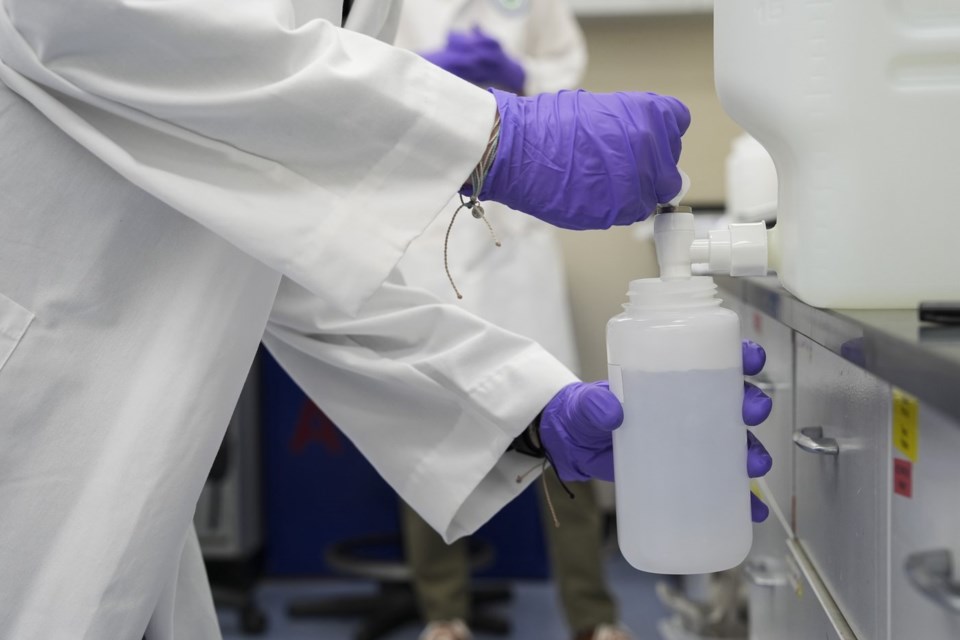The Environmental Protection Agency said Wednesday that it plans to weaken limits on some so-called forever chemicals in drinking water that were finalized last year, while maintaining standards for two common ones.
The Biden administration set the for PFAS, or perfluoroalkyl and polyfluoroalkyl substances, finding they increased the risk of cardiovascular disease, certain cancers and babies being born with low birth weight. Those limits on PFAS, which are man-made and don’t easily break down in nature, were expected to reduce their levels in drinking water for millions of people.
Limits on three types of PFAS, including so-called GenX substances found in North Carolina, will be scrapped and reconsidered by the agency, as will a limit on a mixture of several types of PFAS.
The Biden administration’s rule also set standards for the two common types of PFAS, referred to as PFOA and PFOS, at 4 parts per trillion, effectively the lowest level at which they can be reliably detected. The EPA will keep those standards in place, but give utilities two extra years — until 2031 — to comply and treat for the chemicals.
"We are on a path to uphold the agency’s nationwide standards to protect Americans from PFOA and PFOS in their water. At the same time, we will work to provide common-sense flexibility in the form of additional time for compliance,” said EPA Administrator Lee Zeldin.
The development was first reported by The Washington Post.
It appears few utilities will be impacted by the withdrawal of limits for certain, newer types of PFAS. So far, sampling has found nearly 12% of U.S. water utilities are above the Biden administration’s limits. But the vast majority of utilities face problems with PFOA or PFOS.
Health advocates praised the Biden administration for the tight limits. But water utilities took issue with the rule, saying treatment systems are expensive to install and that customers will end up paying more for water. The utilities sued the EPA.
The EPA’s actions align with some of the arguments utilities made in their lawsuit. They argued that the EPA lacked the authority to regulate a mixture of PFAS and said the agency didn’t properly support limits on several newer types of PFAS that are now rescinded. They also asked for the now-granted two-year extension.
Erik Olson, a senior strategic director of health at the nonprofit Natural Resources Defense Council, said the move is illegal. The Safe Water Drinking Act gives the EPA authority to limit contaminants in drinking water and it includes a provision meant to prevent new rules from being looser than previous ones.
“With a stroke of the pen, EPA is making a mockery of the Trump administration’s promise to deliver clean water for Americans,” Olson said.
Manufactured by companies like Chemours and 3M, PFAS were incredibly useful in many applications -– among them, helping clothes to withstand rain and ensuring that firefighting foam snuffed out flames. But the chemicals also accumulate in the body. As science advanced in recent years, evidence of harm at far lower levels became clearer.
The Biden-era EPA estimated the rule will cost about $1.5 billion to implement each year. Water utility associations say the costly rules, combined with recent mandates to replace harmful lead pipes, will raise residents’ bills and fall hardest on small communities with few resources.
The Biden administration did work to address cost concerns. The Bipartisan Infrastructure Law provided $9 billion for chemicals like PFAS and utilities have against PFAS polluters that will help.
Some utilities have been surprised to find out they are over the limits.
“This gives water pros more time to deal with the ones we know are bad, and we are going to need more time. Some utilities are just finding out now where they stand and that’s almost too late already for 2029,” said Mike McGill, president of WaterPIO, a water industry communications firm.
But what utilities really wanted was a higher limit on PFOA and PFOS, according to Mark White, drinking water global practice leader at the engineering firm CDM Smith. He suspects the utility industry will continue to sue over those limits. Dissatisfied environmental groups will likely file challenges, too.
___
The Associated Press receives support from the Walton Family Foundation for coverage of water and environmental policy. The AP is solely responsible for all content. For all of AP’s environmental coverage, visit
Michael Phillis, The Associated Press




